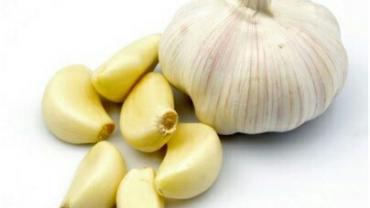
In a world where clickbait headlines and competition for “likes” and “shares” means sensible science is sidelined by sensationalist promises regarding the latest and greatest super fruit newly discovered deep in the Amazon rainforest it’s nice to know that some of the tried and true old school workhorses of natural health continue to stand the test of time. It’s even nicer when some of these compounds come in foods that aren’t just good for us but taste great too. There’s anti-inflammatory rosemary and ginger blood sugar moderating cinnamon anti-depressant saffron and let’s not forget antimicrobial antifungal antiparasitic and anti-thrombotic garlic. With all those “antis” going for it one thing garlic is pro is good health. There are only two types of people whom garlic might not be good for: vampires and people whose significant others don’t like kissing someone with garlic breath!
Due to the broad array of biochemical effects its bioactive constituents exert garlic is great to keep in the kitchen as well as in the supplement stash. The phytochemistry of garlic is surprisingly complex but the bulb’s unique organosulfur compounds are responsible for its health benefits—and also the stinky breath. Garlic has many bioactive components the best known and studied of which is allicin. However allicin is not present in fresh intact garlic cloves. (This is why a whole head of garlic has virtually no aroma and even an unpeeled clove of garlic is nearly neutral in odor.) The predominant sulfur compound in whole undamaged garlic is alliin. An enzyme called alliinase abundant in garlic is contained in a separate compartment of the garlic and only acts upon its alliin substrate when the plant is injured—that is when it is chopped crushed or chewed. When enzyme and substrate are brought together the result is allicin. The more they come into contact with each other the more allicin is produced which is why coarsely chopping garlic develops just some of the flavor but crushing it such as in a garlic press brings out the most intense flavor so strong it actually burns the tongue if eaten raw. When served a dish that contains large pieces of intact garlic it’s best to chew them if possible because the alliinase enzyme is rapidly and completely destroyed by stomach acid and allicin cannot be made from alliin in the absence of active alliinase. (Alliinase is also destroyed by heat so it’s best to chop or crush garlic and let it stand for a few minutes before adding it to a recipe that will be cooked.)
During research isolating three garlic compounds that inhibited human platelet aggregation one of the compounds proved to be four times more potent than the other two. This compound was named ajoene from “ajo” the Spanish word for garlic. Ajoene exhibits broad spectrum antimicrobial activity against growth of gram-positive and gram-negative bacteria as well as Candida albicans and Aspergillus niger the latter being a common cause of fungal ear infections. Ajoene has also been shown in clinical studies to be as effective or better than the common antifungal terbinafine for the treatment of athlete’s foot tinea corporis (generalized itch due to fungal infection such as ringworm) and tinea cruris ( groin or “jock itch”).
In addition to allicin and ajoene other sulfurous compounds in garlic—namely diallyl sulfide (DAS) diallyl disulfide (DADS) and diallyl trisulfide (DATS) (try saying those three times fast!)—have impressive properties with their efficacy for various applications being a function of the number of sulfur groups. That is DATS is more effective than DADS which is more effective than DAS. These garlic sulfides may help reduce oxidation and glycation of LDL particles as well as reduce expression of cellular adhesion molecules and production of cellular peroxides which may have implications for reducing atherosclerosis.
Garlic has long been recognized as a natural “blood thinner” and anticoagulant. Here too the garlic sulfides may be responsible. In a mouse model of diabetes DAS and DADS reduced plasma levels of IL-6 and TNF-α CRP fibronectin and fibrinogen. DADS and DATS have been shown to reduce lipopolysaccharide-induced inducible nitric oxide synthase nitric oxide production oxidative stress and activation of NF-kappaB. It may be reductions in overall inflammation and levels of proteins involved in blood clotting that underlie garlic’s well-recognized antithrombotic and anti-platelet aggregation properties.
With all the benefits garlic provides for supporting healthy blood it’s surprising that it’s vampires’ downfall. Dracula stay away. Everyone else eat up!